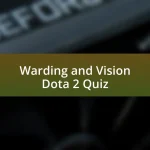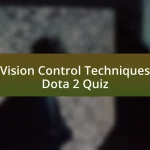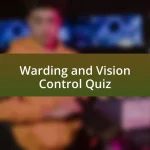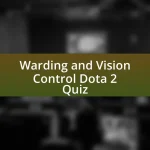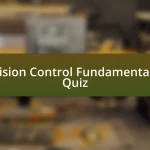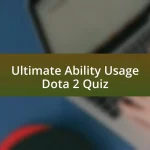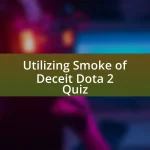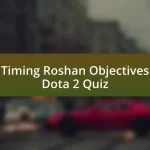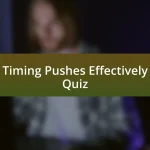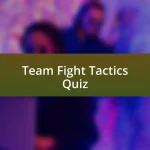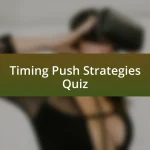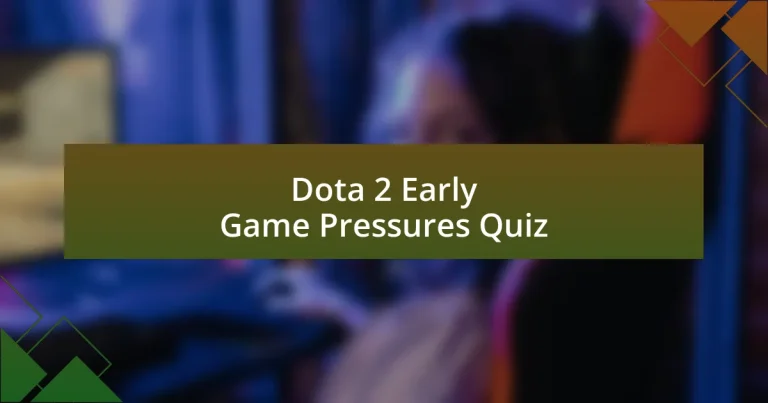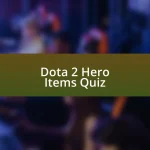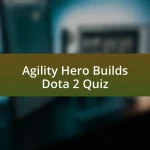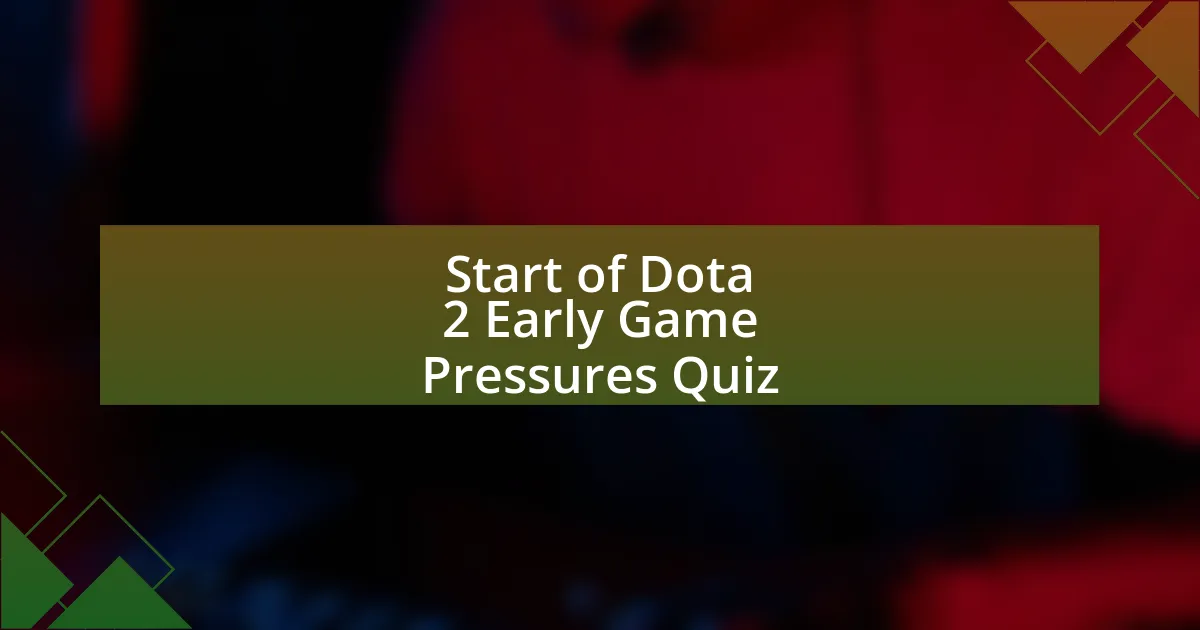
Start of Dota 2 Early Game Pressures Quiz
1. What is the primary focus of the early game in Dota 2?
- Team fights and ganks.
- Farming items and resources.
- Only attacking enemy towers.
- Farming and laning phase.
2. What is the role of the offlaner in the early game?
- The offlaner spends most time in the jungle securing neutral creeps.
- The offlaner typically farms in the offlane and tries to deny the enemy creeps.
- The offlaner solely protects the carry from enemy attacks.
- The offlaner focuses on gathering heroes for team fights.
3. How does vision impact early game strategies in Dota 2?
- Vision helps in tracking enemy movements and planning strategies.
- Vision has no influence on team fight outcomes.
- Vision only allows for faster farming of creeps.
- Vision primarily aids in pushing towers early on.
4. What benefits do wards provide in the early game?
- Wards provide vision by revealing areas of the map, helping players track enemy movements.
- Wards heal allies in the vicinity when placed.
- Wards automatically kill enemy heroes when they come near.
- Wards increase damage output for heroes during fights.
5. Who is primarily responsible for placing wards during the early game?
- The carry hero typically places wards at the start of the match.
- The offlaner usually places wards at the start of the match.
- The jungler might place wards at the start of the match.
- The midlaner often places wards at the start of the match.
6. Which locations are considered strategic for ward placement?
- Rivers
- Junctions
- Forests
- Cities
7. What are the advantages of placing wards unpredictably?
- To provide consistent and predictable information.
- To ensure they are easily visible to allies.
- To avoid enemy teams destroying them and to maintain surprise.
- To increase the risk of being targeted by enemies.
8. What responsibilities does the support player have in the early game?
- The support player mainly protects their own lane without team interactions.
- The support player prioritizes dealing damage to enemy heroes and creeps.
- The support player is responsible for providing vision, helping allies, and managing wards.
- The support player focuses solely on farming and gaining gold.
9. How does effective farming influence the early stages of a match?
- Farming allows heroes to push towers faster and gain map control.
- Farming earns gold and experience, which are crucial for item purchases and character development.
- Farming increases the maximum health of heroes during the match.
- Farming reduces the cooldown of hero abilities early in the game.
10. Why is denying creeps significant for gaining an advantage?
- Denying creeps increases ally hero damage.
- Denying creeps allows for faster item acquisition.
- Denying creeps grants vision in the jungle.
- Denying creeps prevents enemies from gaining gold and experience.
11. In what ways does the jungle play a role during the early game?
- The jungle only serves as a hiding place for heroes.
- The jungle provides a source of gold and experience for heroes who venture there.
- The jungle is primarily used for building structures early on.
- The jungle reduces the overall game time significantly.
12. What impact do early item purchases have on hero performance?
- Buying items early has no effect on a hero`s performance during matches.
- Item purchases enhance hero abilities and provide necessary attributes for survival and effectiveness.
- Early item purchases only affect the late game and do not impact the early match.
- Early purchases weaken hero abilities and hinder performance in battles.
13. How do carry heroes contribute to early game dynamics?
- The carry hero supports allies by placing wards around the map.
- The carry hero plays in the offlane to harass enemy heroes.
- The carry hero focuses on farming and gaining strength to become a powerful force in the mid and late game.
- The carry hero primarily engages in team fights to set up kills.
14. What is the midlaner`s primary function in the early game?
- The midlaner should avoid farming and only support the carry hero.
- The midlaner primarily focuses on ganking other lanes for kills.
- The midlaner typically farms in the midlane and tries to control the center of the map.
- The midlaner’s main objective is to secure the bottom lane for the team.
15. How does laning phase set the stage for the mid and late game?
- Laning phase focuses solely on team fights and aggression.
- Laning phase is irrelevant to itemization in later stages of the game.
- Laning phase is when players should focus only on kills instead of farm.
- Laning phase establishes farm and experience advantages for a strong mid-game.
16. What techniques do offlaners use to deny enemy creeps?
- The offlaner uses abilities to kill or harass enemy creeps, preventing them from reaching the enemy tower.
- The offlaner focuses solely on farming and ignores enemy creeps.
- The offlaner only helps teammates by providing support from behind.
- The offlaner waits for enemy creeps to reach their tower before acting.
17. What defines creep bullying in Dota 2`s early game?
- Creep bullying is when a hero focuses solely on attacking enemy heroes without regard for creeps.
- Creep bullying is about team fights happening around the creeps instead of farming.
- Creep bullying refers to the act of killing enemy heroes to gain gold and experience.
- Creep bullying involves pulling multiple creep waves at once to deny enemy creeps and gain an advantage.
18. Why is the timing of creep bullying actions critical for success?
- Timing allows for maximizing impact.
- Timing is irrelevant in creep movements.
- Timing affects only enemy hero positions.
- Timing determines the lane`s structure.
19. Which types of heroes are effective for executing creep bullying?
- Heroes with high mobility and strong abilities
- Heroes focused on tanking
- Heroes with no mobility skills
- Heroes with low damage output
20. How does the support hero enhance team efficiency in the early game?
- The support hero solely participates in team fights.
- The support hero provides vision and helps allies.
- The support hero develops items for damage output.
- The support hero focuses solely on farming gold.
21. What role does positioning play in a hero`s early game strategy?
- Positioning is crucial as it determines whether a hero can effectively farm, deny creeps, or participate in team fights.
- Positioning primarily influences the hero`s ability to store gold for future purchases.
- Positioning only matters for the carry hero when attacking enemy towers.
- Positioning affects the hero`s ability to use items effectively during battles.
22. How should carry heroes position themselves to maximize farm?
- The carry hero positions at the tower to maximize farm.
- The carry hero positions themselves safely to maximize farm.
- The carry hero charges the enemy to maximize farm.
- The carry hero ignores the creeps to maximize farm.
23. Why is last-hitting vital for a carry hero early in the game?
- It allows the enemy to farm quickly.
- It lets the support hero gain items faster.
- It provides gold and experience for the carry hero.
- It prevents the enemy from using abilities.
24. What positioning strategies might an offlaner employ?
- Tower diving
- Creep bullying
- Farming in the jungle
- Stacking camps
25. How does warding affect the flow of the early game?
- Warding increases the damage output of heroes in fights.
- Warding grants bonus experience for every enemy killed.
- Warding prevents enemy heroes from using abilities entirely.
- Warding reveals areas of the map, helping to track enemy movements.
26. What strategies does the support hero use to manage ward visibility?
- The support hero only buys items for themselves.
- The support hero never communicates with teammates.
- The support hero only focuses on last-hitting creeps.
- The support hero places wards in strategic locations.
27. Why is denying towers crucial in the early game?
- Denying towers grants extra mana.
- Denying towers increases inventory space.
- Denying creeps speeds up game time.
- Denying creeps limits enemy gold gain.
28. What role do midlaners play in protecting their towers?
- The midlaner is responsible for killing enemy jungle creeps instead of defending.
- The midlaner ignores towers and focuses on farming only.
- The midlaner offers support to the offlaner without regard for towers.
- The midlaner defends towers by pushing back enemies and providing vision.
29. How do item builds affect hero capabilities in the early game?
- Item builds have no impact on hero capabilities during the early game.
- Item builds decrease hero strength and hinder performance in fights.
- Item builds only affect heroes in the late game, not in the early game.
- Item builds enhance hero abilities and provide necessary attributes for survival and effectiveness.
30. What criteria do carry heroes consider when selecting items?
- Items that enhance damage and survivability.
- Items that only provide magical damage.
- Items that are exclusively for healing.
- Items that reduce enemy vision entirely.
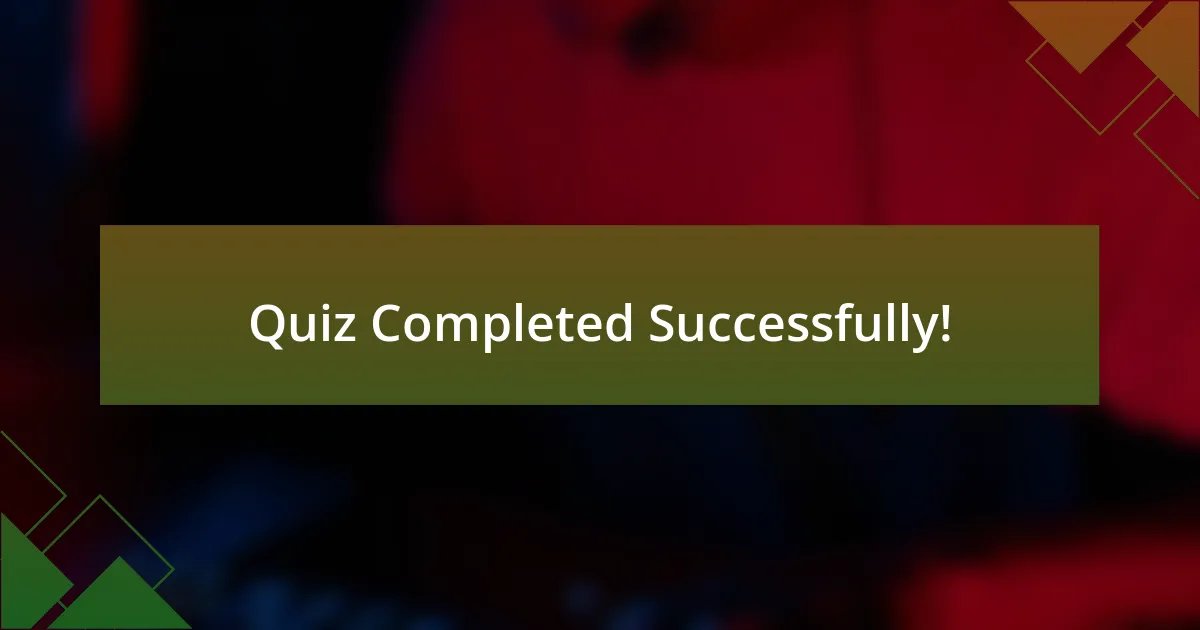
Quiz Completed Successfully!
Congratulations on completing the quiz on ‘Dota 2 Early Game Pressures’! We hope you enjoyed the process and found it both engaging and informative. This quiz covered key concepts that are crucial for understanding how to navigate the early stages of Dota 2 effectively. You’ve likely learned about important strategies, hero matchups, and how to emphasize objectives during this critical phase of the game.
Reflecting on your answers, you may now have a clearer understanding of early game dynamics and the necessity of teamwork in achieving goals. These lessons are vital for enhancing your performance and boosting your confidence as you play. Every quiz question was designed to challenge your knowledge and expand your insights into successful gameplay. We encourage you to keep these strategies in mind as you return to the battlefield.
If you’re eager to dive deeper, don’t miss out on the next section of this page. There, you’ll find comprehensive information on ‘Dota 2 Early Game Pressures’ that can further enhance your skills and understanding. Exploring this topic in greater detail will prepare you for more advanced strategies and tactics. Happy gaming!
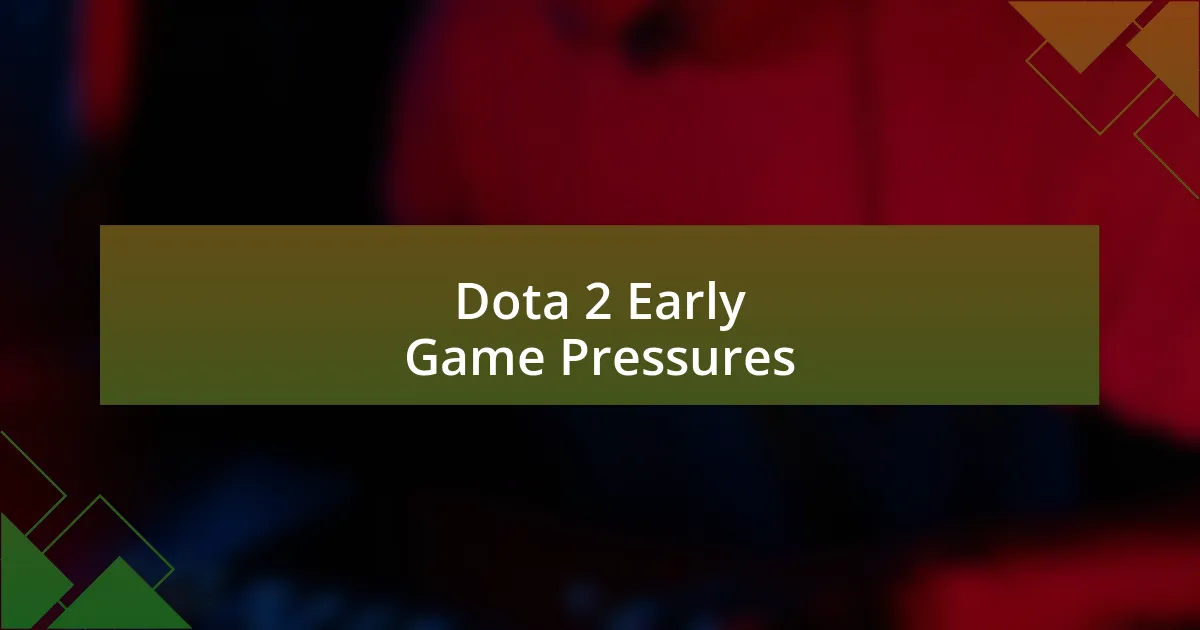
Dota 2 Early Game Pressures
Dota 2: Understanding Early Game Pressures
Early game pressures in Dota 2 refer to the strategic and tactical challenges faced by teams during the initial stages of a match, typically the first 10-15 minutes. During this period, teams aim to gain advantages such as map control, gold, and experience. They also seek to secure objectives like towers and runes. These pressures influence hero positioning, rotations, and item builds. Effective early game management can dictate the course of the match.
Types of Early Game Pressures
There are several types of early game pressures: lane pressure, jungle pressure, and map pressure. Lane pressure involves dominating the opponent in individual lanes, limiting their experience and gold gain. Jungle pressure focuses on contesting resources in the jungle, like neutral camps, enhancing farm opportunities. Map pressure encompasses broader strategy, forcing the enemy team to react to threats on multiple fronts, thus creating opportunities for objectives.
Impact of Hero Picks on Early Game Pressures
Hero selections play a crucial role in shaping early game pressures. Certain heroes excel at applying pressure through their abilities and playstyles. Aggressive laners can outlast opponents and dictate the pace of the game. Some heroes can rotate effectively for ganks, further exacerbating pressure on enemy heroes. A well-rounded draft can balance aggressive and defensive capabilities, allowing teams to adapt to early game situations.
Strategies for Applying Early Game Pressure
Applying early game pressure involves coordinated strategies, including lane control and effective ganking. Teams often use strategies like the dual lane, where two heroes work together to dominate a lane. Ganking requires quick rotations to catch enemies off-guard. Additionally, securing runes and controlling vision with wards can amplify pressure, setting the foundation for transitions into mid-game play.
Responding to Early Game Pressures
Responding to early game pressures necessitates strategic adjustments and communication. Teams can switch lane assignments to counter unfavorable matchups or assist struggling allies. Defensive positioning and timely rotations are essential to mitigate risks. Additionally, focusing on farm efficiency can help recover from early setbacks, allowing teams to stabilize their economy and prepare for mid-game strategies.
What are Dota 2 early game pressures?
Dota 2 early game pressures refer to the aggressive tactics that teams employ to gain an advantage in the first 10-15 minutes of the match. These pressures often include ganking enemy heroes, securing objectives like towers and Roshan, and controlling key areas of the map. Effective execution of these strategies can lead to early gold and experience advantages, increasing the likelihood of winning later stages of the game.
How do teams apply early game pressure in Dota 2?
Teams apply early game pressure in Dota 2 through coordinated ganks involving multiple heroes targeting isolated enemy heroes in lanes. They typically use heroes with crowd control or high burst damage, often focusing on supporting their carry. Vision control through wards also plays a crucial role, revealing enemy movements and allowing for strategic engagements.
Where is early game pressure most effective in Dota 2?
Early game pressure is most effective in the lanes, particularly around the safe lane and mid lane. Ganking the mid-laner disrupts their farm and experience, while pressuring the safe lane can prevent the enemy carry from gaining necessary resources. Additionally, contesting the river and key jungle areas for farm control is vital for maintaining map dominance.
When should teams focus on early game pressure in Dota 2?
Teams should focus on early game pressure from the start of the game until around the 15-minute mark. This period is crucial as it establishes momentum and can significantly hinder opponents’ ability to scale into the mid and late game. Timing is essential, as different heroes peak at varying times; thus, exploiting the early phases before enemy heroes are strong is advantageous.
Who typically leads early game pressure strategies in Dota 2?
The team captain or in-game leader typically leads early game pressure strategies in Dota 2. This player coordinates actions, strategizes movements, and communicates with teammates. Additionally, pivotal heroes, often the ones with strong crowd control or mobility, take on crucial roles in executing these strategies and gaining territory advantage early in the game.

